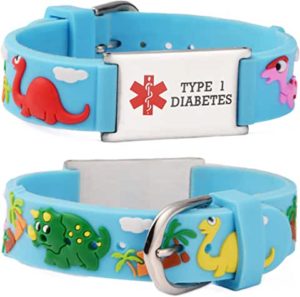Juvenile Diabetes Association
What does the Juvenile Diabetes Association Do?
The Juvenile Diabetes Association (JDA) publishes detailed recommendations and guidelines for the management of type 1 diabetes in the form of position statements, consensus statements, and technical reviews.
This mainly includes special considerations, recommendations, and standards of medical care for children and adolescents. Other position statements include age-specific guidelines for screening for retinopathy and neuropathy in juvenile diabetes.
Special care for children with diabetes

The main purpose of the Juvenile Diabetes association is to provide a comprehensive resource on current standards of juvenile diabetes care pertaining to pediatric diabetes.
Although it’s not an exhaustive resource on all aspects of care and management of the condition, current works in progress are indicated and relevant resources are provided as such.
Information provided by the Juvenile Diabetes Association is based on relevant evidence from current and published studies and is supported by expert consensus or opinion. Numerous detailed chapters and guidelines on juvenile diabetes are included. Existing texts include those by the Australian Pediatric Endocrine Group and ISPAD (International Society of Pediatric Adolescent Diabetes).
Children and adolescents have needs and characteristics that dictate special standards of care and management. Management of juvenile diabetes must take the differences between various ages into account.
Importance of Involving Adults in the Management of Juvenile Diabetes
In caring for adolescents and children with juvenile diabetes, professionals recommend that adults be involved in the kid’s diabetes management. School-aged children, as well as adolescents, may be unable to provide their own juvenile diabetes management care independently.
Therefore, it’s essential to provide education about how to care for children as well as adolescents with diabetes to the entire family unit while emphasizing developmentally and age-appropriate care and integrating this into diabetes management. Therefore, adult supervision is important in most aspects and throughout the transition in and out of age-specific care.
-
Diagnosis
Diagnosis of juvenile diabetes is usually a straightforward process largely because most kids with the condition present a history of polydipsia, weight loss, polyphagia, and polyuria with ketonuria, ketonemia, glycosuria, and hyperglycemia. However, in most cases, the physician must document elevated blood glucose levels to diagnose diabetes.
-
Initial care
The main determinants of where, how, and who provides the initial education and care are the age of the child, clinical severity at presentation, the ability to provide education, and the proximity of the child to tertiary care centers.
Ideally, newly diagnosed patients with type 1 diabetes should be evaluated by a team consisting of a nurse educator, a mental health professional, a dietitian, and a pediatric endocrinologist qualified to provide pediatric-specific support and education.
Unfortunately, such systems are unavailable in most areas and circumstances. However, nowadays the use of telemedicine is beginning to allow the expertise of pediatric centers to improve the care of juvenile diabetes patients in remote regions.
Regardless of the primary and secondary source of care, all providers should understand the stages of juvenile diabetes and how they affect the management of the condition. Moreover, they should understand different management approaches to juvenile diabetes.
-
Diabetes education
Studies in patients with juvenile diabetes show that factors such as family and patient education, close contact with diabetes teams, and delivery of comprehensive diabetes case management are associated with reduced complications, hospitalizations overall costs, and emergency room visits.
The educational program should be personalized to the specific needs of the child, culturally sensitive, and designed to accommodate the needs of the child and family. The patient’s sibling (s) should also be taken into consideration as they may feel sidelined due to the increased attention paid to the affected child as a result of the new diagnosis.
Proper juvenile diabetes education for the patient and family is complex and intense and requires diabetes educators with skills including compassion, good communication, humor, in-depth knowledge of type 1 diabetes, and sensitivity.
-
Identification

Children who are active in sports are a case in point, and it is essential for coaches to be aware of their condition and the signs and proper treatment of hypoglycemia. Bracelets and necklaces are readily available from various organizations and major pharmacies.
Toddlers with diabetes can wear shoe identification tags which may be useful in case of emergencies. Wallet cards are not adequate because they could easily be missed by caregivers or paramedics.


 Although there is no standard diet for juvenile diabetes, a dietitian or nutritionist can help you come up with a diet and create meal plans that work for you even in the long term.
Although there is no standard diet for juvenile diabetes, a dietitian or nutritionist can help you come up with a diet and create meal plans that work for you even in the long term. You should work with your doctor to calculate the right dosage of insulin according to your carbs intake. Your healthcare provider will also guide you on the importance of exercise and your recommended activity level.
You should work with your doctor to calculate the right dosage of insulin according to your carbs intake. Your healthcare provider will also guide you on the importance of exercise and your recommended activity level.
